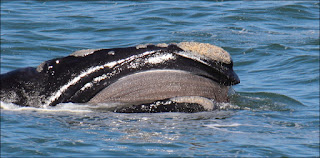 |
| Smiling Lachlan! |
I had the
pleasure of meeting Lachlan Nicholson, whom was living in a beautiful wooden
house tucked away at the end of a road on the mountainside. Born in Waterfall,
Durban, he was diagnosed with cerebral palsy at the age of 18 months and his
parents were given the prognosis that he would never learn to speak, write,
walk or do anything for himself. Now 25 years old, despite the unfavourable
prognosis he was given, he is a tattoo collector, loves reading in his spare
time, an avid writer and plans to study English literature and film through
UNISA. He states his, ‘’biggest challenge is feeling normal as related to the
rest of society.’’
Lachlan was
a victim of a house robbery back in Durban and as a result became involved in
tae kwon do with an instructor in Durban, a little over a year ago. A young man
with determination and a challenge on his mind, despite having to use a
wheelchair to go about his daily life, decided to take on the form of martial
arts that has since changed his life and made him physically stronger.
He
considers his biggest achievement in life, ‘’leaving Durban for Cape Town as it
is by no means a small feat.’’ Lachlan met Aly while they were both working
together as journalists at Media24 in Durban and stayed in contact. He was
inspired to come to Cape Town after Aly suggested he visit the beautiful and
diverse city for a holiday. Aly, currently working as a paramedic, undertook a
home-based care course in order to be fully equipped to take care of Lachlan.
Both with journalism backgrounds, they ‘’decided to take on the trip as a
project and write about accessibility in the city.’’
He wrote
for his blog, The Great Cape Town Odyssey, in the evenings after a days’ quest
in the city and surrounding areas about accessibility and their recent
activities. The goal of his Cape Town journey and writing about it is to,
‘’push others with disabilities.’’ His favourite adventure in Cape Town was,
‘’visiting the Bay Market in Hout Bay for its diversity.’’ He expresses that
he, ‘’hasn’t come across many hurdles in Cape Town, it is doable, and in some
instances there might be issues but to deal with it as it comes.’’
 |
| Lachlan at Boulders Beach visiting the penguins. |
Lachlan,
‘’would want people to know about those with cerebral palsy that they may look
a little a strange but are just people. Take a few minutes to engage with others
with the disability and don’t fear saying the wrong thing because you might
just miss out on an enlightening conversation.’’
We moved
the conversation onto concerns within the disability community and Lachlan
shared that his, ‘’concerns for people with disabilities include the lack of
infrastructure in the county and that services to the disabled community are a
joke.’’
His advice
for those that avoid conversations or are scared when meeting people with
disabilities is, ‘’saying hello is a good place to start. Treat people like
people. Disabilities do not define a person and are usually the most boring
aspect of that person.’’
Lachlan
wisely shared advice for those with disabilities, ‘’Do not fear. If you are
scared of doing something, build up slowly to achieve it. Make small changes
every day, so big things won’t seem so big. Slowly prepare yourself. See
possibilities, not hurdles.’’












